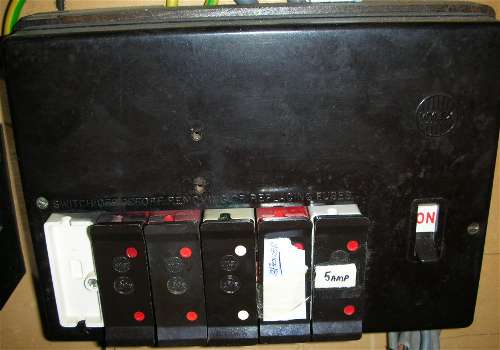Consumer units can be found in every modern home. whether you have an old type that uses fuses or a modern dual RCD consumer unit it is always a good idea to familiarise yourself with it as you may need to find it in an emergency.
| Before working on any electrical circuit you must ensure that it is isolated correctly and cannot accidentally be switched back on. Please read the article on safe isolation procedures before doing any electrical work. If you are not 100% certain what you are doing call a qualified electrician. Building regulations are changing all the time and modifying your home electrics could be against new rules and could invalidate your home insurance, if in doubt check first! |
Before working on any electrical circuit you must ensure that it is isolated correctly and cannot accidentally be switched back on. Please read the article on safe isolation procedures before doing any electrical work. If you are not 100% certain what you are doing call a qualified electrician. Building regulations are changing all the time and modifying your home electrics could be against new rules and could invalidate your home insurance, if in doubt check first!

Above we have a typical setup for the incoming electrical supply to a dwelling, I have numbered the items of interest for clarification.
1. Main incoming fuse. This is a sealed unit that is connected to the service cable, this unit is permanently live and cannot be isolated without the regional electricity board doing it from the Sub station, which will also isolate most of the other houses in your area. The main fuse is normally rated at 100Amps but is often 60 Amps or less in older properties. Should you need this fuse removing, perhaps to renew the meter tails or the consumer unit then you must get the regional electricity board to remove it as it is their property.
2. The suppliers Meter. This measures the amount of electricity that you use, the more electricity you use the faster the dial in the middle spins, newer meters are of the digital type and do not have a spinning dial. The Main incoming fuse is connected to the meter with special cable that is referred to as meter tails, these are normally 25mm2
3. The suppliers switch. In newer properties and properties that have recently been serviced by the regional electricity company you may find a large switch like the one in the picture, this is between the meter and the consumer unit and makes it a lot easier for an electrician to change the consumer unit. These are often double pole switches, although in some instances you will find a RCD. This switch is connected to the meter and consumer unit again with 25mm2 Meter tails. In older properties you will not find one of these switches. It is always a good idea to have one fitted by your regional electricity company, this should be fitted for free if you request it.
4. Consumer unit. A consumer unit can contain either fuses or MCB's depending on it's age, this is where the householders responsibility for the electrical system starts.
Please click on the different types of consumer unit below or the writing for a more detailed explanation-





